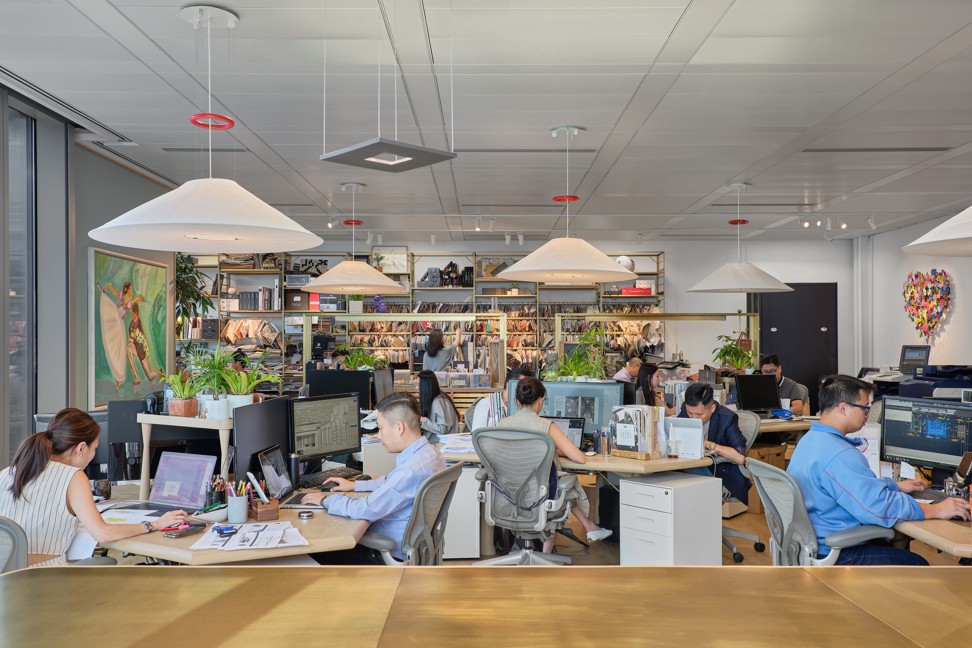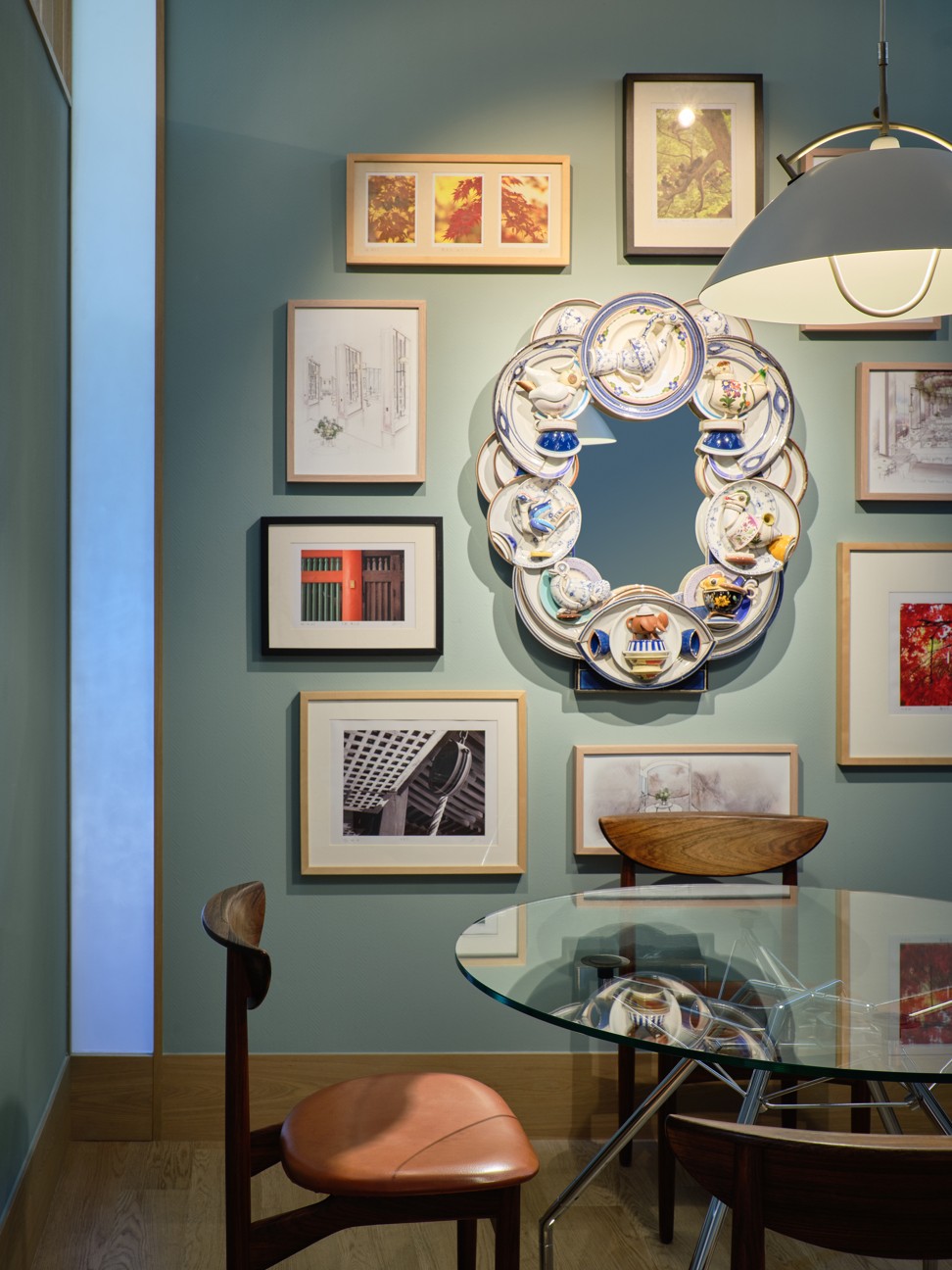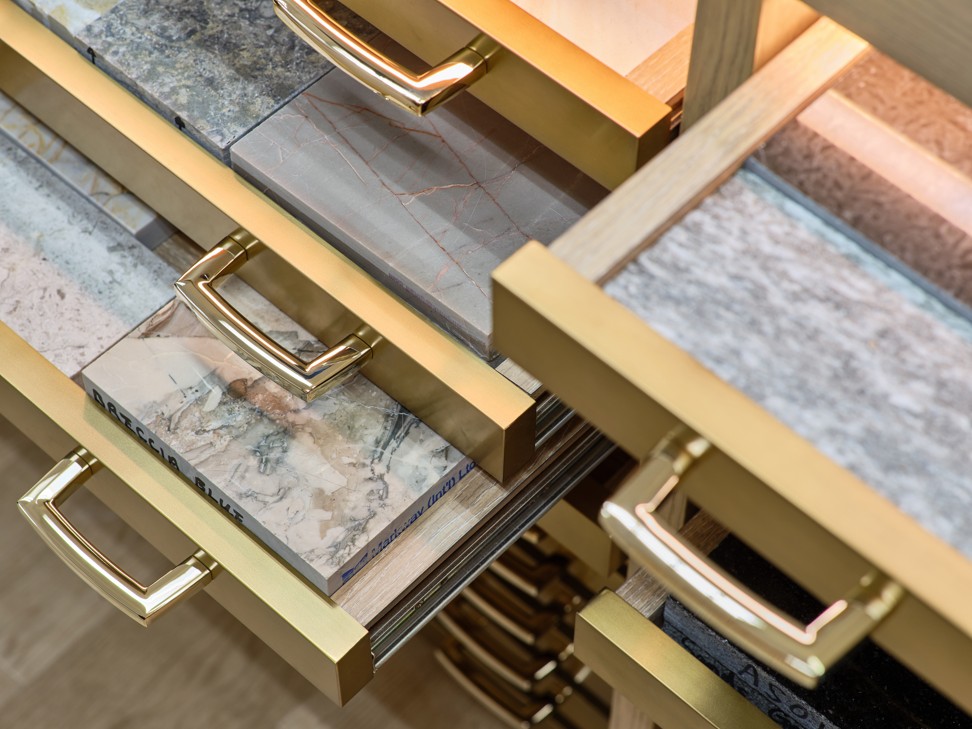
A Hong Kong office that feels like home – design duo behind AB Concept show you how it’s done
In their office in Tsim Sha Tsui’s K11 Atelier, Ed Ng and Terence Ngan take a personal, playful approach, and it works
Stepping into Terence and Ed’s new place feels reassuringly familiar. The rooms might be just built, but the designer and architect duo have brought with them much-loved pieces gathered during two decades of travels. And there, making herself at home by the fireplace, is their dog, Ah Fook.
For all its cosy domesticity, this is actually a place of work. Ed Ng and Terence Ngan, co-founders of design studio AB Concept, decided to up stumps from Causeway Bay and move this year to new premises at K11 Atelier, the mixed-use office-tower component at Tsim Sha Tsui’s Victoria Dockside.
The move sees Ng returned to his childhood neighbourhood, where the pair also live.
“This is where I grew up: where my mum went to work, where I went to school and where my parents would take me on weekend outings,” he says.
This is where I grew up: where my mum went to work, where I went to school and where my parents would take me on weekend outings
In those days it wasn’t so glamorous as now, but the partners reasoned that “Victoria Dockside is where exciting things are happening”, and they wanted to be in the middle of it for creative inspiration.
With more people working from home – including Ng and Ngan most days – the partners felt a homelike environment would be more productive.
Except for the ergonomic chairs, “literally everything else is domestic furniture, a lot of it vintage”, Ng says.
There’s another reason, too, Ng confesses. These two design bowerbirds buy objects they like, but they never sell any – so the home they share is packed to the rafters with books, artworks and collectibles.
“We’ve run out of space,” he says, “So, we move things around.”
Apart from an underlying monkey theme – a nod to Ng’s birth year in the Chinese zodiac – everything is “absolutely eclectic”.
All work and no play is old way at Hong Kong’s hippest offices
Each piece is a marker of time, perhaps reflective of their taste during a certain period, or as a memento of a special trip. In lieu of a reception desk, the entry has a sideboard holding the latest magazines for clients to browse, teamed with a circular chair by Roberto Lazzeroni, teak lounge chairs by Peter Hvidt and Orla Molgaard-Nielsen and a monkey artwork by Korean artist Yim Tae-kyu.
Beyond, by the ethanol fireplace, is the bed belonging to Ah Fook, the Shiba Inu (a Japanese hunting dog) who is AB Concept’s “chief entertaining officer”.
The dining area (aka conference room), with its eight-seater table, is one of Ng’s favourite areas in the 5,000 sq ft space. Full-height windows open up a beautiful harbour view.
“The chandeliers [in the conference room] we bought at auction years ago – they used to be in an opera house in Sweden,” Ng says. “The painting is by a Filipino artist – I saw it in the gallery at W Bali and bought it – and you see another monkey, just hanging. The vintage TV cabinet, table and chairs all came from auctions.”
Next door is a small sitting room used for interviews or private discussions. This is the only room with a door – the rest of the space is open-plan. The cluster of artworks here includes framed photos taken by Ng and Ngan, and sketches of their projects, grouped around a Sotheby’s-bought vintage mirror made of chipped porcelain. The Herman Miller table was bought by Ngan when AB Concept was founded 20 years ago.
The two stars of AB Concept unveil a five-star office
The pair view the kitchen as the heart of a home, and here is no exception. The brass-topped island bench extends to an eating area, and along with a coffee machine, microwave and refrigerator, there’s an ample wine cellar.
Of course, their staff of almost 30 do need to work, so the partners designed hexagonal desks to facilitate ease of collaboration. Screens are arranged in such a way as to resemble a triangular-shaped planter, with potted greenery inside. Overhead lamps by Ingo Maurer, made of Japanese paper and iron, were chosen for their homelike ambience. LED tubes fixed to the ceiling provide additional task lighting.
Finally, there’s the materials room, which resembles a lavish walk-in wardrobe. This houses samples for clients to choose from.
“In the new office, we allocated less space for our sample library as a complete opposite to the bigger-the-better concept we had previously adopted,” Ng says. “Now, we have to be extremely selective with what goes into the library, and we found that by placing some materials directly around the office, it provides additional inspiration.”



Sample library The materials room consists of several types of display unit: slide-out drawers accommodate stone samples and hanging racks show off fabrics. Styled to resemble a walk-in wardrobe in a high-end residential project, the space was designed and built by AB Concept for about HK$250,000.



Tried + tested

Material world For storing the material samples shown to clients, AB Concept took inspiration from a luxury walk-in wardrobe. “Everything should be easily seen at a glance – like in a Chanel or Dior boutique,” says Ed Ng. Here, brass-finished drawers slide out effortlessly to reveal not scarves and ties, but stone samples.
“The insides are illuminated so you can see the beauty of the stone,” Ng says. And fabric swatches hang from racks. At one end, space that might otherwise be a dressing area holds a table and chairs for client discussion or impromptu brainstorming.

